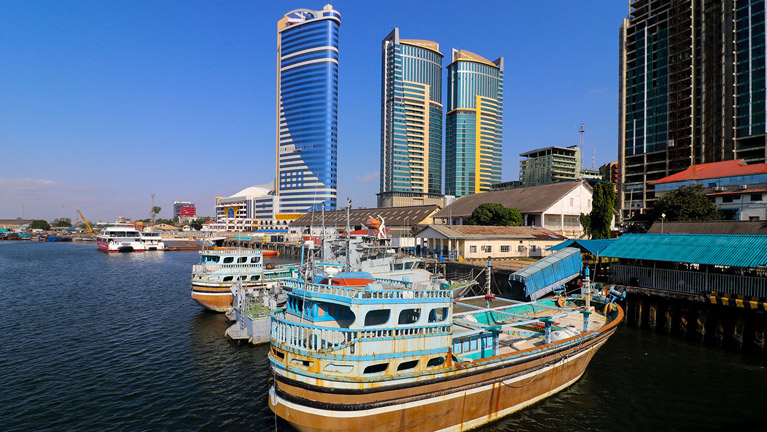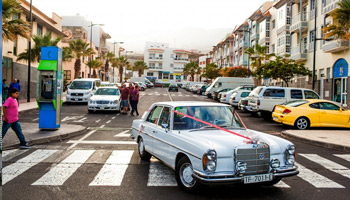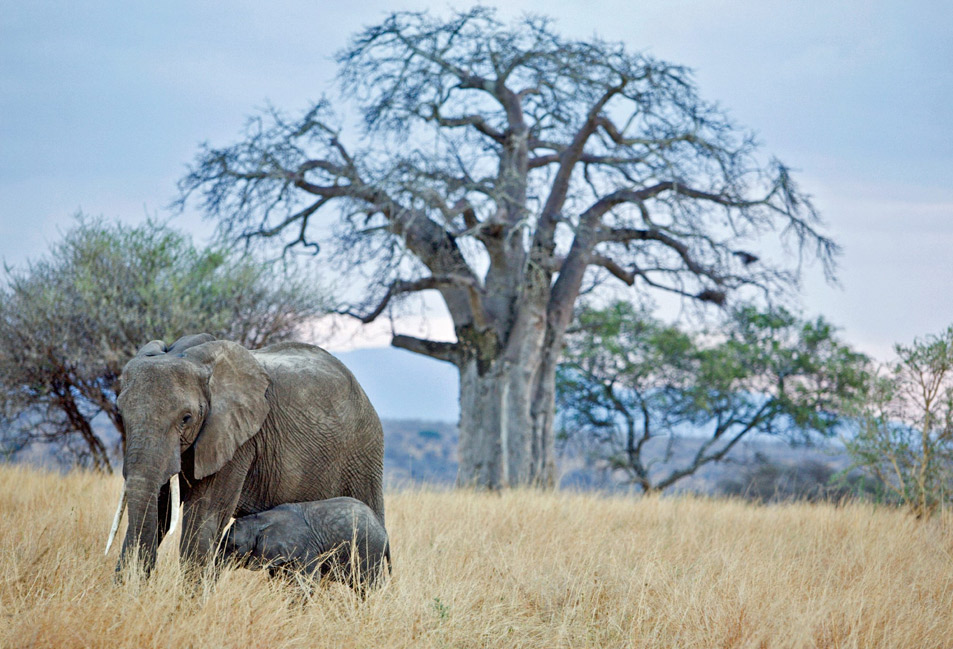Embark on a full-day exploration of the bustling city of Dar es Salaam. Affectionately known as ‘Dar’, this once slumberous fishing village has morphed into a thriving metropolis. Your interpretive, privately guided tour takes you to the city’s top attractions such as the lively atmosphere of Dar es Salaam’s fish market, where dhows dock at dawn to offload the night’s delicious catch. Amble down pungently spicy India Street, where the flavours of the East are a feast for the senses, at the stark purple of twilight, clusters of Dar es Salaam street food carts, specializing in delicious Indian food emerge. Bright red tomatoes, raw onions, green chilies, and fresh coriander are the beginnings of any enticing Indian street food snack. An absolute must is a Zanzibar Mix, an Indian inspired Zanzibari Tanzanian bowl of curry soup with heaps of delectable toppings.


Dar es Salaam is on the Swahili Coast, the name means "the house of peace" formerly Mzizima, is an enticing mix of sight seeing, shopping and entertainment, the largest city in Tanzania reflects a fascinating blend of its rich historical past and its sophisticated contemporary present. Dar es Salaam which means ‘HAVEN OF PEACE’ was given its name by Sultan Majid bin Said of Zanzibar when he decided to use the harbor city as a port and trade centre in between 1858 and 1862. Since then the town has flourished and is now the commercial hub of the country. It is the former capital city until 1974 before being officially transferred to Dodoma with high population, important economic centre and one of the fastest growing cities in Tanzania. Dar es Salaam is most prominent city in arts, fashion, media, music, film and television and a leading financial centre it is also the largest and most populous Swahili-speaking city in the world.
Tazara; – It is a Bi-National single-track Railway built from 1970 to 1975 financed and supported by China Government and was the longest railway in sub-Saharan Africa covering 1,860 km (1,160 mi) long and is operated by the Tanzania-Zambia Railway Authority (TAZARA), linking the Southern Africa Regional transportation Network to Eastern Africa's seaport of Dar es Salaam, offering both freight and passenger transportation services between and within Tanzania and Zambia.
Uhuru Torch (Torch of Freedom) – The Freedom Torch was placed and first lit on top of the Highest Peak of Africa of Mt. Kilimanjaro upon Tanzania's attainment of independence on December 9, 1961 by Alexander Nyirenda. Symbolizing to shine in the country and across the borders to bring hope where there is despair, love where there is enmity and respect where there is hatred.
Mnazi Mmoja Park; A wonderful green area in the centre of the city, with the Uhuru Torch Monument built to celebrate the country's independence in 1961.This is near Jamhuri and Uhuru Streets. On one side seen is the Uhuru Torch Monument; on the other side of the park is the Republic Fountain which commemorated the foundation of the republic in 1962.
Clock Tower – It is zero distance of the City located at the roundabout that connects Samora Avenue, Nkrumah, Uhuru, Railway and India Streets, inaugurated on 11th Dec 1961 to commemorate the City status of Dar es Salaam as well.
Askari Monument – It is located at the center of a roundabout between Samora Avenue and Maktaba Street, unveiled in 1927 to honor the African Soldiers who fought in the first World War and to the memory of the Native African Troops who fought, to the carriers who were the feet and the hands of the army, and to all men who fought, served, died for the King and the Country in the East Africa in World War 1”. The former statue was unveiled in 1911 to celebrate the Germans victory in 1888, represented Major Herman Von Wissmann, a German explorer and soldier, who became Governor of German East Africa in 1895. British entered Dar es Salaam in 1916 and removed this statue along with those of Karl Peters and Otto von Bismarck.
The National Museum – Established in 1934 as a memorial museum dedicated to King George V, opened to the public as the National Museum in 1940 and expanded in 1963. The entry gate is located in Shaaban Robert Street; it houses many historical treasures the most important of which are the remains of the first humans “Paranthropus boisei” discovered by Dr. Louis Leakey at Olduvai Gorge. The museum also has a large colonial history section with Ethnographic displays include traditional crafts, head dresses, ornaments and musical instruments. Hunting and gathering, initiation rites, traditional healing and witchcraft are a few other themes; also on view are leather and bark clothing, and a wooden bicycle in working order.
Botanic Garden – Situated just opposite the National Museum along Samora Avenue, It was established in 1893 by Professor Stuhlman and used as a research and testing ground for cash crops. It is still home to the Horticultural community, which looks after the indigenous and exotic plants with several species of palm, jacaranda, etc. Inside the garden there is a small parking lot with a small building used by the garden office attendant and the local government office of the Kivukoni Ward.
The Ocean Road Hospital Complex – Founded in 1895 by the German colonial government catered exclusively for German community. After the First World War the British Colonial government reserved the hospital for serving the European communities. After independence in 1961 the hospital was renamed the Ocean Road Hospital, and all racial restrictions were removed. In 1980 the facility was converted into a cancer treatment unit, the Radiotherapy Unit of the Faculty of Medicine, University of Dar es Salaam was shifted from Muhimbili Medical Centre to the Ocean Road Hospital. In June 1996, Ocean Road Hospital was made an independent autonomous institute directly under the Tanzanian Ministry of Health and its name changed to Ocean Road Cancer Institute. Very admirable today as it has undergone a total rehabilitation, Note the small domed building between the main hospital and the old doctor’s house where Dr. Heinrich Hermann Robert Koch, a German scientist researched about Malaria and Tuberculosis Viruses
The State House – Original built by the German in 1890 as a Governor’s palace: Damaged by the British naval gunfire in 1914 and the current building, called Government House, was reconstructed under the first British Governor of Tanganyika Horace Byatt in 1922 to the designs of architect John Sinclair tuning with a German architecture. It was expanded in 1956 to include the South wing named after Princess Margaret who visited the country at that time. It was then renamed State House after independence, and now undergone total upgrading for use as the home of the current president and government Offices. There are several gifts at state house brought by visitors, including an Ethiopian shield with crossed spears, given by Emperor Haile Selassie and a representation of the coat-of-arms of the Republic of Tanganyika, given by the government of India in 1961 that acts as a backdrop to the President's seat in the Council Chamber.
Tinga Tinga Art Gallery – Tingatinga Paintings are Tanzanian traditional paintings created using layers of bicycle paint representing physical features and landmarks drawn in a canvas material. Formerly they were locally drawn on Masonite and ceiling boards and later Canvases added using several layers of glossy enamel paint which turned its noticeable outlook brilliant, and very attractive representing local people’s activities, Landscape with its exotic animal. Bicycle paint is a good material to use on making clear, vibrant colored paintings that contain sharp contrasts and still gives the ability to work with shades surfaces. The name Tingatinga was derived from the founder of the painting style, a Tanzanian named Edward Said Tingatinga who passed away in 17th May 1972, he left behind his art flying his name to the world, a wife, two children (Daudi & Martina) and six painters who later taught many more other painters.
The Slipway – It was an old boat yard located on the Msasani Peninsula formerly used for building and repairing Boats and ships, launching and retrieving small boats including servicing fishing boats as well. Currently Slipway area has been modernity modified to serve both Local and International standard services including the traditional Souk Market with handmade products. A souvenir shopping centre harboring more than one hundred stalls is available accumulating different crafts from different parts of the city and the country including the famous Tingatinga paintings and Makonde Carvings. The Slipway area also has the Best Hotel overlooking the Indian Ocean, apartments, Bank services and the Pharmacy treatment, a unisex beauty Salon and kid’s playground, one of the best bookshops in town, general ice cream Parlour and fresh juice. There are four restaurants at Slipway which serves different cuisines while enjoying the view of Msasani peninsula and the breeze of the Indian Ocean such as The Terrace restaurant which serves mostly Italian cuisines, The Waterfront restaurant set along the Indian Ocean serves seafood and Pizza, Classico café in the middle location serves Sandwiches and Cappuccino and Japanese fresh fish style and Sushi is prepared and served at Azuma Restaurant. Generally Slipway is a one stop lively shopping & leisure centre with family oriented entertainments.
Village Museum (Bagamoyo Road) – Collection of main on-site traditional buildings from different places and ethnic groups in Tanzania in which it gives a global picture on different main traditions of Tanzanian tribes. The Kijiji cha Makumbusho, or Village Museum, established in 1967, is an open-air ethnographical museum located in the outskirts of Dar es Salaam, on the road Mwenge and Bagamoyo. It showcases traditional huts from 16 different Tanzanian ethnic groups. There are also examples of traditional cultivations, and traditional live music and dance shows are held daily.
Mwenge Hand Craft Market – The One stop shop for Carvings and Paintings. It is a small and main carving factory and its main market at the same place located along Sam Nujoma road in Mwenge area Dar es Salaam, the factory is a collection of the famous Makonde carvers whose main tribe migrated from Mozambique to Southern highlands of Tanzania and specialized in carving using Ebony, Mahogany and other type of woods representing their traditional past, present and seasonal activities, their tribe’s myth and life style, traditional matters and other features, spirits, ghost, demon-faced and bodies sculptures. Demon masks are used mostly in ceremonial, treatment and prediction of future events and trends. Most of these ghost and demons sculptures are antiquities. At this major tourist attraction community, tourist and visitors are allowed to watch live the process, steps by steps of producing sculptures and other crafts from the beginning to the final stage of smoothing and polishing, all stages are done by hands without modern machine support. Ebony tree ignite the self-confidence and fuel the proud of the carver with the assurance to achieve an incredible elegant sculpture, the inspirational Masai sculpture and Tree of life which can stand above six feet higher cost about a year for each of it to be accomplished, Mostly Masai sculptures represent Masai warriors and ladies and a tree of life represent African extended families living ordinary life while supporting one another from one generation to the next. The quality, strength and beauty of these sculptures are found in the strongest African black wood named Ebony. Many African animals and Masai people have been statuette and statue, as far as to the current knowledge, Makonde carvings is one of the best handcrafts made in Tanzania.
The Azania Lutheran Church (Kivukoni front) - Azania Front Lutheran Church was built by the German Missionaries in 1898 in the city center opposite New Africa Hotel and overlooking the Indian Ocean, the nearby small town of Kigamboni and the Harbor of Dar es Salaam. The Church is active and operational in the same purpose as it was built. Many people of the same faith feel proud to perform their marriage vows and contract in this historical building.
St. Joseph Cathedral (Sokoine Drive) –It is the main Catholic Church in Dar es Salaam and most Government leaders who share the same faith perform their prayers in this Church which is opposite Zanzibar Ferry Boats Terminal. It was built by the German around 1897 and completed in 1902 in Gothic style architecture.
Central railway Station – Built in 1890’s: the starting point of the railway to the Lake Regions. It runs west from Dar es Salaam to Kigoma on Lake Tanganyika via Dodoma. A branch leads to Mwanza on Lake Victoria. It was the second railway project coming into existence in the colony of then German East Africa after the Usambara Railway. The Railway starts at Dar es Salaam at the Indian Ocean through Dodoma the center of the country and proceeds further to the shore of Lake Tanganyika, Kigoma. It crosses central Tanzania completely with a length of 1,254 kilometers (779 mi) and overcomes the height of the east edge East African rift valley.
University Campus – It is located 13 kms from the city center and was established in 1961 as an affiliate college of the University of London. The university became an affiliate of the University of East Africa (UEA) in 1963, shortly after Tanzania gained its independence from the United Kingdom. In 1970, UEA split into three independent universities: Makerere University Uganda, the University of Nairobi in Kenya, and the University of Dar es Salaam. The university has five campuses in and around the city of Dar es Salaam and operates academically through ten faculties, some of which are exclusive to specific campuses
Old Boma (Sokoine Drive) – Built in 1866 by Majid bin Said, sultan of Zanzibar One of the oldest surviving building in the City. It is located at the crossing of Morogoro Road and Sokoine Drive, facing the harbor and adjacent to the City Hall. It is now set as Dar es Salaam Centre for Architectural Heritage (DARCH), a tourist information center and also has a permanent exhibition on the architectural evolution of Dar es Salaam.
Greek Orthodox Church (Upanga Road); Built by the Greek planter’s community, a most beautiful Romanesque Church with freestanding bell. The diocese was originally established in 1959, its jurisdiction included Tanzania, Kenya, and Uganda. At that time Metropolitan Nicholas established his see in Kampala, when Orthodoxy first arrived in Tanzania in the 1970’s and began to grow, the baby steps that were taken resulted in 55 Orthodox communities taking root once the Bukoba Diocese was established. Orthodox Church Metropolis of Chicago Mission Teams has been serving in Tanzania since 1994. Mission teams have worked side by side with the Tanzanians teaching, building churches and a catechetical training center for monks and priests. As of 2006 it has expanded to 166. Seventy of these communities now have permanent churches. The number of faithful has increased from 17,000 to 41,200, and the number of clergy serving them has more than tripled from 9 to 34 in 2007, teaching and construction of churches took place at the request of now Metropolitan Jeronymous.
Samora Machel Avenue – This was the main shopping street in Dar es Salaam before all vendors being moved out of the city center. The street is named after the former president of Mozambique Samora Moses Machel born 29th September 1933 and passed away 19th October 1986 when his presidential aircraft crashed near the Mozambique-South Africa border. In his early life he served as Mozambican military commander, politician revolutionary, a socialist in the tradition of Marxism–Leninism, he served as the first President of Mozambique from the country's independence in 1975.
White Fathers’ House – Built in 1865, the Sultan Majid Guest House. In 1922, it was sold to the White Fathers, and became their main base in East Africa. The building is open to visitors and has a little exhibit with old pictures of Dar's sea front, dating back to the years of German rule. The White Fathers' House (also known as Atiman House) it’s a historical building located in Sokoine drive, north-east of St. Joseph's Cathedral, i t is named after the White Fathers, as the building has been the seat of their mission since 1922. The alternative name of "Atiman" refers to Adrian Atiman, an African physician who was freed from slavery in Nigeria by the White Fathers and later served in Tanzania until his death in 1924.
Rita Hayworth House (Oyster Bay) – This famous American actress and dancer was born 17th October 1918, had a house and lived in Dar es Salaam during her marriage with Aga Khan. She achieved fame during the 1940s as one of the era's top stars, appearing in a total of 61 films over 37 years. The press coined the term "The Love Goddess" to describe Hayworth after she had become the most glamorous screen idol of the 1940s. In 1948, Hayworth left her film career to marry Prince Ally Khan, a son of Sultan Mahommed Shah, Aga Khan III, the leader of the Ismaili sect of Shia Islam. They were married on May 27, 1949 and Hayworth filed for divorce from Khan on September 2, 1951, and in January 1953 Hayworth was granted a divorce from Ally Khan on the grounds of extreme mental cruelty.
Jamatkhana Mosque (Upanga road) –strong> The Ismaili Mosque where the Aga Khan (Grandfather of the present Karim Khan), was weighed against gold and Diamonds
Forodhani Hotel -strong> Built in 1865: used to be the Officer’s Club in the Colonialist period, now a hotel management institution.
Resident Magistrate’s Court Building (kivukoni front) - built in 1893: Original the German high Court.
The Secretariat Building (Azania front) –strong> Built in 1890’s: Original the office of the German Governor.
City Hall Building (City Council) – Built 1870: still houses the city Council today
Customize your Trip with choose a Tailor-Made destination, pick your lodges, and we'll do the rest
